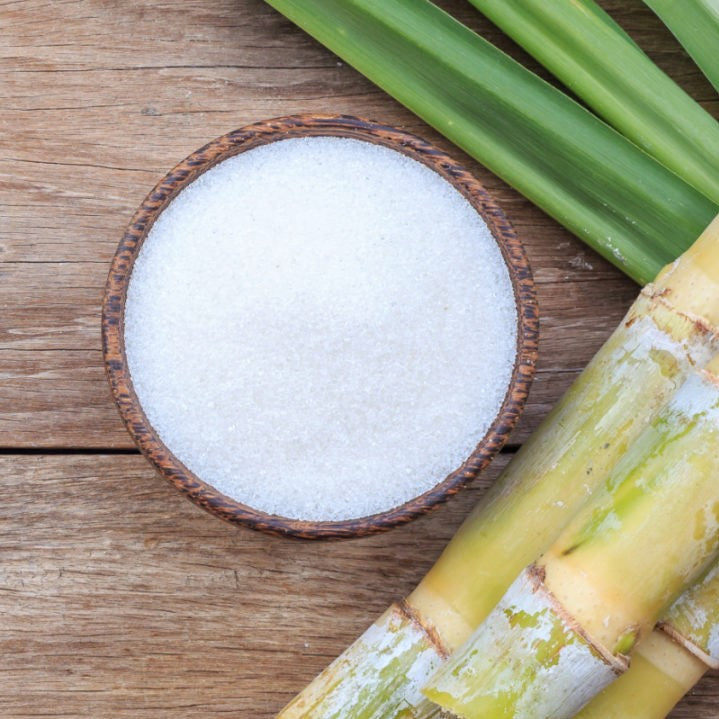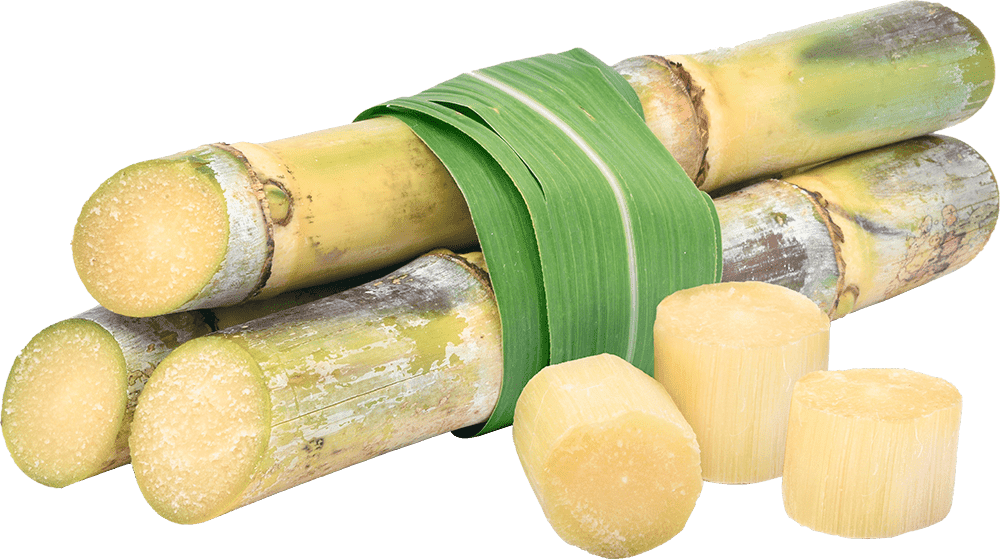An In-Depth Overview to the Environmental Influence and Sustainability Practices in Cane Sugar Processing
The ecological impact of cane sugar processing offers a complicated selection of challenges that warrant cautious examination. From dirt deterioration and too much water usage to the carbon impact associated with growing and production, the consequences of standard techniques are far-reaching. In contrast, the fostering of innovative sustainability steps uses a path towards much more accountable manufacturing approaches. Recognizing the interaction in between these issues is vital for stakeholders in the sector. What particular techniques can be implemented to strike a balance between efficiency and ecological stewardship? The solutions lie in a better take a look at both the obstacles and possible remedies.
Introduction of Walking Stick Sugar Processing
Walking stick sugar handling includes a collection of methodical actions that transform sugarcane right into refined sugar. Originally, harvested sugarcane is transported to refining facilities, where it goes through cleansing to eliminate dirt and debris. Following this, the walking cane is crushed to remove juice, which is then made clear by eliminating impurities via heating and the enhancement of lime.
The cleared up juice goes through dissipation, where water is gotten rid of to concentrate the sugar content. These crystals are separated from the staying syrup utilizing centrifugation, resulting in raw sugar.
The end product is then dried and packaged for distribution. Throughout this entire process, preserving effectiveness and quality assurance is essential to guarantee the sugar fulfills sector criteria. Each step in walking cane sugar handling not only adds to the end product yet also has ramifications for source use and waste generation, setting the stage for discussions on sustainability and ecological effects related to sugar manufacturing.
Ecological Obstacles of Manufacturing
The manufacturing of cane sugar presents several significant ecological obstacles that warrant focus. One key worry is the comprehensive use agrochemicals, including chemicals and plant foods, which can lead to soil deterioration, biodiversity loss, and contamination of neighborhood water sources. The runoff from sugarcane areas commonly brings these chemicals right into close-by ecosystems, disrupting aquatic life and influencing the wellness of communities reliant on these water bodies.
An additional obstacle is the high power intake connected with sugarcane processing. The boiling and refining stages need considerable warmth, mostly generated by melting fossil fuels, contributing to greenhouse gas exhausts. Furthermore, the expansive acreage required for sugarcane farming can cause deforestation and environment destruction, more intensifying environment modification and harmful wildlife.
Furthermore, the labor techniques in some regions elevate ethical problems, as workers might face inadequate working conditions and insufficient wages. This circumstance typically bolsters a cycle of poverty in neighborhood communities. Cane Sugar Processing. Attending to these environmental difficulties is crucial for establishing extra sustainable methods in cane sugar production, inevitably benefiting both the setting and the areas associated with this sector
Water and Land Use Effect
Water resources and land usage are vital parts in the walking stick sugar industry that considerably influence the setting. The cultivation of sugarcane needs considerable water input, with price quotes suggesting that it can consume as much as 2,000 litres of water per kilo of sugar generated. This intensive use of water typically brings about depletion of local water resources, impacting not just the sugarcane vineyards yet additionally bordering environments and areas that count on the same water sources for agriculture and domestic use.

Additionally, land usage for sugarcane growing can result in deforestation and the conversion of all-natural environments into monoculture vineyards. This method diminishes biodiversity, interferes with local ecological communities, and contributes to soil destruction. The growth of sugarcane Get More Info fields usually intrudes on important farming land, creating competitors for sources between food and biofuel manufacturing.
Lasting practices, such as maximizing irrigation strategies and executing plant rotation, are vital to mitigate these effects. By taking on much more effective water usage and land administration strategies, the walking stick sugar market can reduce its environmental footprint, ensuring a balance between agricultural efficiency and environmental conservation.
Greenhouse Gas Emissions
Greenhouse gas discharges stand for a substantial ecological problem within the cane sugar processing industry, particularly as farming techniques increase to meet global need. The farming of sugarcane, a plant that prospers in exotic environments, depends greatly on artificial plant foods and chemicals, which add to laughing gas discharges. Furthermore, land-use modifications, including deforestation for new sugarcane ranches, release carbon dioxide stored in vegetation and soil.
Throughout handling, energy consumption is an additional significant resource of greenhouse gas discharges - Cane Sugar Processing. Numerous sugar mills make use of fossil gas to power machinery and create warm, resulting in considerable carbon impacts. Moreover, the transportation of raw sugarcane and ended up products adds layers of discharges with fuel burning in cars
The cumulative impact of these emissions aggravates climate adjustment, presenting risks not just to the environment yet likewise to the long-term stability of the market. Stakeholders have to acknowledge the immediate need for thorough techniques that resolve these discharges. This entails assessing existing agricultural methods, refining methods, and transport systems to identify locations for improvement and reduction. Addressing greenhouse gas discharges is important for cultivating a more lasting cane sugar market in a transforming climate.

Sustainable Practices and Innovations
Lasting practices and innovations are progressively important in the walking cane sugar handling industry as stakeholders look for to reduce ecological impacts while keeping productivity. One significant innovation is the application of integrated crop management, which enhances resource usage by combining Full Article dirt management, bug control, and crop turning methods. This method boosts yield while minimizing chemical inputs and maintaining soil health.
In addition, the adoption of eco-friendly energy resources, such as biomass from sugarcane residues, has actually acquired grip - Cane Sugar Processing. By converting waste products right into energy, processing centers can lower their reliance on nonrenewable fuel sources, consequently decreasing greenhouse gas discharges
Water monitoring practices have likewise seen renovations through the recycling and reusing of water in processing plants, substantially lowering freshwater consumption. Advancements in modern technology, such as accuracy agriculture, allow farmers to check plant health and resource usage better, making sure lasting farming practices.
Additionally, accreditation programs like Fair Trade and Jungle Partnership urge environmentally accountable farming techniques and advertise social equity within the supply chain. By embracing these sustainable methods and technologies, the walking cane sugar handling sector can enhance its resilience and contribute positively to environmental stewardship.
Final Thought
The ecological effect of walking stick sugar processing provides considerable difficulties, consisting of dirt destruction, high water intake, and greenhouse gas exhausts, along with moral worries associated with labor techniques. Resolving these concerns with lasting techniques, such as incorporated crop management, renewable resource fostering, and water recycling, is necessary. By promoting socially fair and ecologically accountable techniques in sugar production, the industry can mitigate its damaging results, making sure a much more sustainable future for both communities and ecological communities associated with this market.
Walking stick sugar processing involves a collection of systematic actions that transform sugarcane check my blog into polished sugar. Each action in walking stick sugar handling not just contributes to the last product but additionally has ramifications for resource usage and waste generation, establishing the stage for conversations on sustainability and ecological impacts linked with sugar manufacturing.
Greenhouse gas discharges stand for a substantial environmental problem within the cane sugar handling industry, especially as agricultural methods increase to satisfy international demand.Sustainable techniques and developments are significantly important in the walking cane sugar processing market as stakeholders look for to reduce ecological impacts while maintaining performance.The ecological effect of walking stick sugar handling presents considerable obstacles, including soil destruction, high water usage, and greenhouse gas exhausts, alongside honest concerns associated to labor techniques.